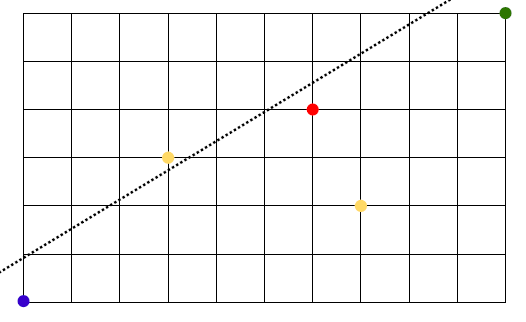COMP 2711H: Lecture 7
Date: 2024-09-16 02:53:37
Reviewed: 2024-10-07 02:47:38
Topic / Chapter: More Counting Problems
summary
❓Questions
Notes
Arrangement Along the Circle
-
Problem 1
- how many ways can people sit around a circle?
- rotation / shifting of an arrangement: is considered equivalent / same permutation
-
Problem 2
- how many ways cab we put distinct people around identical circles?
- i.e. no. of tables
- assume: ?
- find relation using induction-like approach
- 👨🏫 let's notate the solution as
- base case:
- person is either
- in a circle on their own:
- as we need to place the rest
- sharing a circle
- how many ways can we insert?
- at least ways, as there are tables
- as there are people already on the table, and we are choosing, "who is on the left?"
- in a circle on their own:
- how many ways cab we put distinct people around identical circles?
-
Problem 3
- in how many ways can we people around circle if 2 people must not be next to each other?
- as there are ways of ordering people around the table.
- 👨🏫 or:
- no. of ways to put them together(when ),
- and there are total permutation
- thus
-
Problem 4
- how many ways cab we put distinct people around identical circles?
- if 2 people must not be next to each other?
- case: no. of ways to put two people together
- case 1: setting up a new table for them
- case 2: sharing table w/ people
- case 1: setting up a new table for them
- finally:
- (and subtracted from all no. of permutations)
- ❓ can't we simply treat two people as one?
- i.e.
- how many ways cab we put distinct people around identical circles?
-
Problem 5
- let be a set of elements
- what is the no. of pairings in
- 👨🏫
- and no element can be pair of itself
- solution 1
- steps
- after choosing an element, there are ways to choose its pair
- after choosing the next element, there are ways to choose its pair
- ...
- after choosing the penultimate element, there are 1 way to choose its pair
- i.e.
- steps
- solution 2
- simply showing all linear permutations
- and grouping them together
- there are ways to ordering the elements
- and ways to order different groups and ways to order groups within it
- thus
- solution 3
- if order is accounted:
- and there are different ways to order them
- thus,
- if order is accounted:
- let be a set of elements
Weekly Problems
-
Problem 1: Week 2
- how many permutations of people satisfy ?
- 👨🏫 aka: derangement
- show recursive solution
- let no. of ways to arrange w/ people / elements
- (similar logic as then )
- general cases
- person sits on chair
- two cases
- sits on chair ()
- does not sit on chair
- as: each people (except ): has exactly ine forbidden sit
- for :
- for : (as that is the condition)
- so: it's a direct subproblem of size
- solution:
- i.e. no. of choosing , then recurrence holds for each cases
-
Problem 5: Week 2
- 73 boys, 9 girls; 82 total
- how many permutations s.t. all girls appear before all boys?
- part 2: having 7 girls in top half, and 2 girls in bottom half
- top half: 7 girls & 34 boys
- bottom half: 2 girls & 39 boys
- one of the solution:
- choose who will go in the top half
- (no need to choose who will go in the bottom, as those are complements from top half)
- choose who will go in the top half
- part 3: no two girls are next to each other
- detour:
- no. of solutions of ;
- consider: 10 blocks, separated by 2 (=3-1) bars
- there are 11 slots total
- so
- no. of solutions of ;
- let
- then the same condition!
- thus:
- similarly: consider girls as blocks, and boys as bars
- first, there are ways to order the girls
- and let no. of boys after girl (and : no. of boys before girl 1)
- ;
- let:
- and for all others:
- now we have
- thus:
- however, boys (nor girls) are considered distinct
- so:
- detour:
- and with permutations:
- part 4: no three girls are next to each other
- one solution: adding constraints, such as:
- let : no. of solutions for the question
- solution: either starts w/ boy or a girl
- case 1: seq. starts w/ a boy
- as any boy can be the first
- case 2: seq. starts w/ exactly one girl?
- ways to choose
- case 3: seq. starts w/ exactly two girls?
- case 1: seq. starts w/ a boy
- 👨🎓 how about the base case..?
-
Problem 6

- how many rectangles are there?
- i.e.
- and
- finally:
-
Problem 7
- how many ways are there of moving, from blue to green?
- 👨🏫 you can only move up & right
- so there are 16 possible moves, 10 being
Rand 6 beingU - thus: